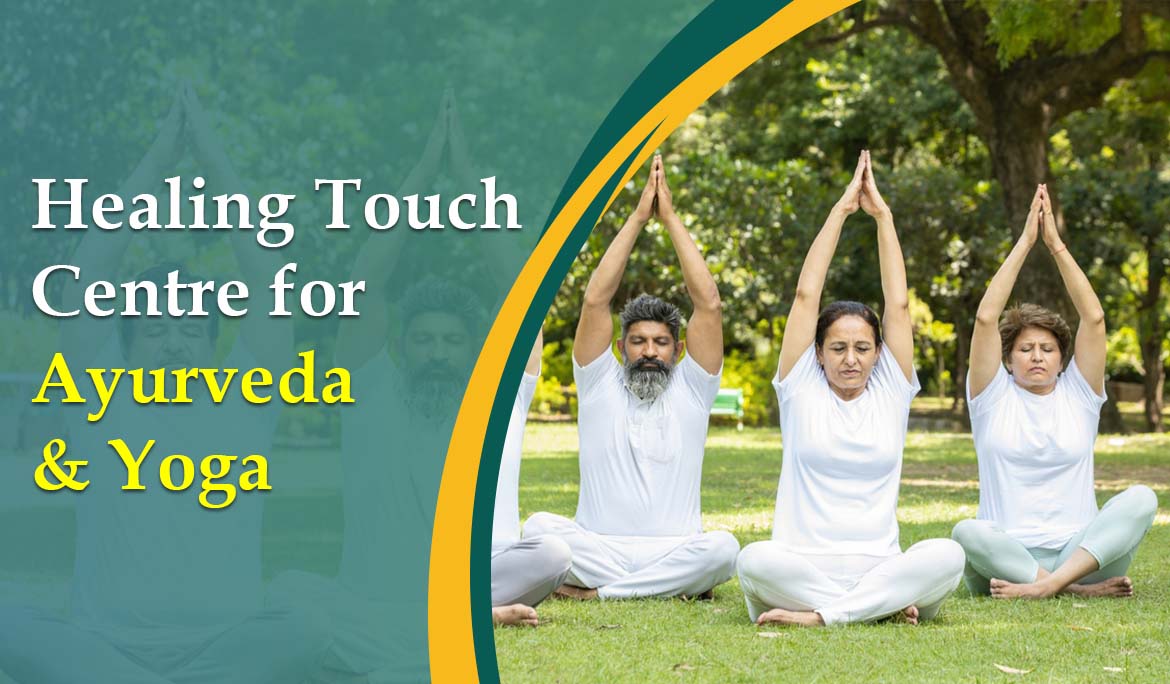Yoga and Ayurveda are not just about exercises and herbs. They’re systems that cover every part of life and the universe. They have grown together over thousands of years. But in the last 150 years, especially outside India, they’ve often been practiced separately. Today, there’s a push by our Healing Touch Centre For Ayurveda & Yoga to bring them back together. It is showing a complete approach to healing, awareness, and personal growth.
The Beginnings of Yoga
Yoga has been around for about 5,000 years. Its roots go back to the Rigveda, an ancient text with sacred chants meant to connect people with a higher cosmic awareness. This early practice set the foundation for what would become deeper knowledge in later texts like the Vedanta.
Back then, these chants helped people grow spiritually and achieve their life goals by connecting with divine forces found in nature and the soul. Important elements included Agni (fire), Vayu or Indra (air and energy), Surya (sun), and Soma (moon). These elements represent different aspects of human experience, such as speech, vital energy, the soul, and the mind.
The Growth of Ayurveda
Ayurveda, which means “science of life,” came from the Vedic tradition and focuses on overall health and healing. Originally, Ayurveda was part of the Vedic practice, aimed at improving life span and well-being with various health practices.
Ayurveda is closely related to the Atharva Veda, which includes many healing chants. But Ayurveda’s elements are found throughout the Vedic texts and are woven into the Vedic deities and cosmology.
Vedic Healing Methods
In Ayurveda, the term “Chikitsa” means therapy. Important texts like Charak, Sushruta, and Vagbhatta include details on diagnosis and treatment. Ayurveda provides a complete view of health, linking body, mind, and soul. It offers methods for diagnosing, treating, and maintaining health, covering everything from diet and herbs to surgery and bodywork. It uses rituals, chants, and meditation to heal both body and mind. Yoga practices like asana (physical postures) and pranayama (breath control) are also part of Ayurvedic healing tools.
What is Yoga?
Yoga texts, like the Yoga Sutras, are divided into sections such as Samadhi Pada (deep meditation), Sadhana Pada (spiritual practice), and Kaivalya Pada (liberation). These texts focus on consciousness, energy (prana), and spiritual practices rather than medical treatments.
Yoga doesn’t usually include medical diagnoses or treatments like Ayurveda. Instead, it looks at energy, senses, the mind, and spiritual practices. While Yoga does touch on health and wellness, it mainly addresses spiritual and mental aspects. It leaves physical health to Ayurveda.
Bringing Yoga and Ayurveda Together
The word “Yoga” means to connect or integrate. A true yogic approach from our Healing Touch Centre For Yoga combines body, energy, senses, mind, and consciousness. Yoga isn’t just about physical postures; it’s a complete system of healing.
Classical Yoga includes eight limbs, starting with lifestyle practices and values, moving through physical postures, breath control, and reaching deep meditation. Reducing Yoga to just physical exercises like asana misses the full, integrated approach Yoga offers.
Asana can be seen as the “outer medicine” of Yoga, helping with muscle and joint issues and overall fitness. Its benefits are even greater when combined with Ayurvedic dietary and lifestyle advice. Pranayama, or breath control, is the “inner medicine,” influencing the body’s energy and balancing Ayurveda’s doshas (biological humors). It affects various systems in the body and mind, working well with Ayurvedic treatments.
Pratyahara, which means drawing energy inward, is important for deep healing and meditation. Treatments like massage or panchakarma often use pratyahara to help the body and mind relax and detoxify.
Yoga as a Way of Life
Yoga includes Dharana (focused concentration), Dhyana (meditative contemplation), and Samadhi (unity and enlightenment). These higher aspects of Yoga support healing by creating a positive mindset and deep self-awareness. Yoga’s inner practices are crucial for dealing with psychological issues, making it a powerful tool for mental and emotional healing.
In Summary
Bringing Yoga and Ayurveda together is the main focus of HiiMS Premier for locations including Delhi, Noida, Gurgaon, Bangalore, and others. It is for a complete approach to healing. Combining Ayurveda with Yoga offers a full system of medicine that supports Yoga’s spiritual practices. This combination provides a complete healing experience, addressing both physical and spiritual needs.
Reuniting Ayurveda and Yoga brings back their original connection, offering a full approach to health and wellness. This union not only enriches our understanding of healing but also connects traditional practices with modern medicine, addressing the root causes of illness and promoting overall well-being.













